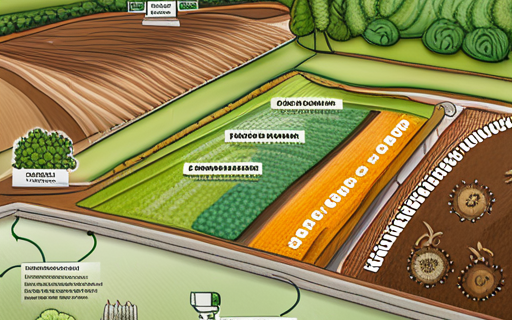Are you concerned about climate change and food security? Regenerative agriculture offers a groundbreaking solution. This approach centers on improving soil health, boosting biodiversity, and promoting sustainable farming methods. So let’s dive in and explore how regenerative agriculture is revolutionizing our food systems.
A Fresh Approach to Farming
For many years, farmers have relied on traditional farming methods. Unfortunately, these techniques often degrade soil health over time, leading to weaker crop yields and less nutritious food. However, regenerative agriculture turns the tide. By using strategies like crop rotation and cover crops, this approach enriches the soil, enhances yields, and delivers a more nutrient-rich food supply.
The Carbon Connection
One of the standout benefits of regenerative agriculture is its role in carbon sequestration. Instead of releasing carbon dioxide into the atmosphere, regenerative practices, such as no-till farming and composting, lock carbon into the soil. This dual action not only fights climate change but also bolsters agricultural resilience against its impacts.
Strengthening Ecosystems
Why stop at soil health? Regenerative agriculture also excels in enhancing ecosystem stability. By cultivating a range of crops and promoting diverse habitats, farms become hardier. They resist pests, diseases, and extreme weather more effectively. Plus, the reduced use of chemicals makes farming more environmentally friendly.
Empowering Communities
But the benefits don’t stop there. Regenerative agriculture has a powerful social impact as well. By focusing on local food production, it opens up fresh opportunities for marginalized communities. People can gain better access to wholesome food while also boosting local economies. In turn, this uplifts food security and aligns with broader environmental goals.

Collective Responsibility
As regenerative agriculture gains traction, it’s inspiring a shared sense of duty among farmers, consumers, and lawmakers alike. The movement is setting the stage for a sweeping transformation that will echo through American agriculture and extend globally.
The Road Ahead
In summary, regenerative agriculture offers a concrete solution to pressing issues of food security and environmental sustainability. By enhancing soil health, increasing biodiversity, and engaging local communities, it presents a balanced strategy for a better future.
Ready to make a change? Visit the EAT Community to join a team of expert farmers who offer invaluable insights into transitioning from conventional to regenerative farming.
By adopting these strategies, you can be part of a growing movement that not only addresses the urgent needs of today but also safeguards the well-being of future generations.
Take the Leap into Regenerative Agriculture Today!
Don’t wait to be part of the solution for a more sustainable and secure future. The time for action is now! Whether you’re a farmer looking to make the switch, a consumer wanting to make informed choices, or a policy-maker ready to support groundbreaking change, you have a role to play in this agricultural revolution.
Join us in the journey towards a healthier planet and a more equitable food system. Head over to EAT Community today to become a part of our community of expert farmers and sustainability advocates. There, you’ll find invaluable resources, tools, and insights to kick-start your own transition into regenerative agriculture.
Let’s work together to create a food system that nourishes us today and preserves the Earth for tomorrow. Click the link, join the movement, and be the change you want to see in the world. Act now—our planet and future generations are counting on you.
Related Articles and Resources:
- Deforestation and Climate Change: A Guide to the Environmental Consequences and Solutions
- Top 5 differences between Traditional farming and modern farming | Impact & Types
- Regenerative Agriculture: Impacting the Ecosystem and Improving Health
- 5 cultivation and establishment methods compared
- Unlocking the Potential: The Benefits of Practicing Regenerative Agriculture




multiplies (see also article
European glory, and even after
Preserved about 300 thousand.